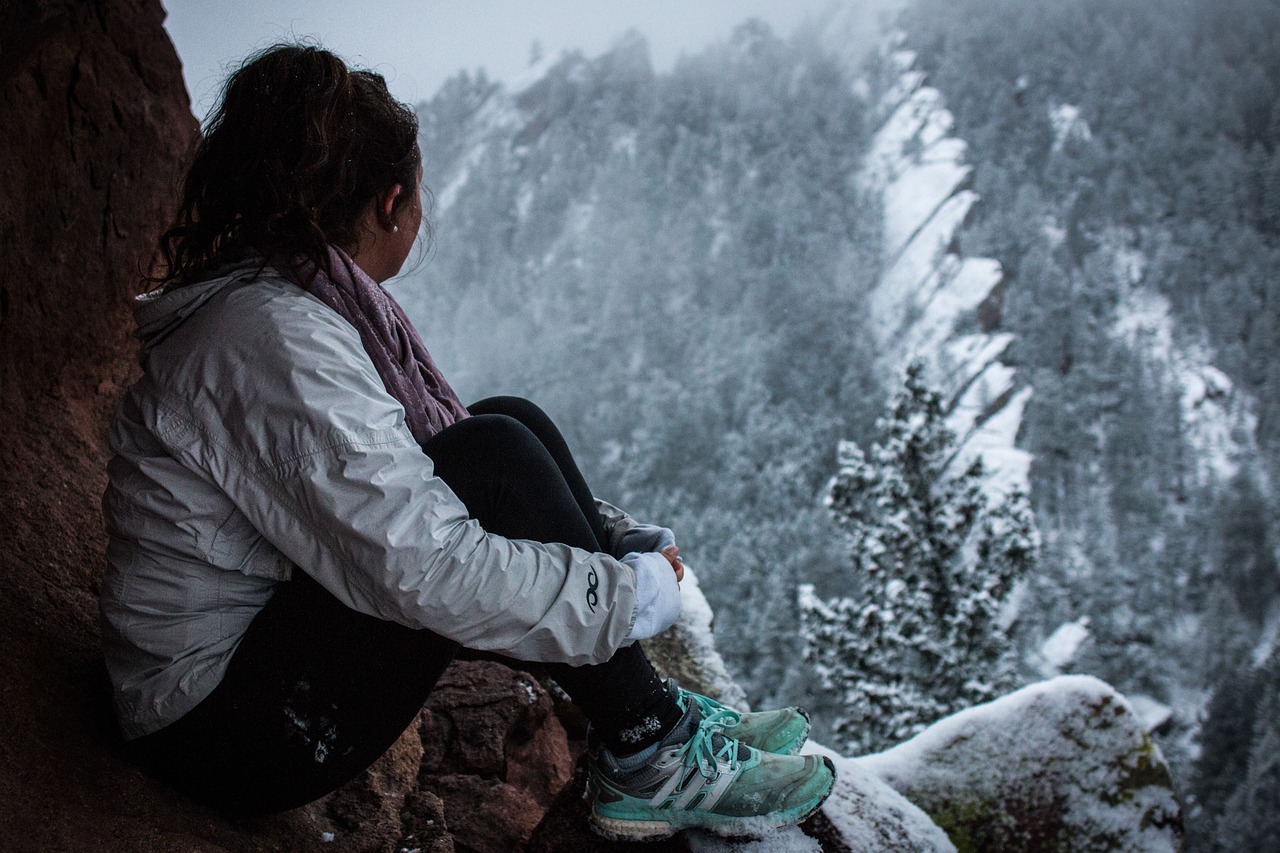When the temperature drops and winter’s chill sets in, staying warm becomes a top priority. Whether you’re an avid outdoor enthusiast, a winter sports enthusiast, or just trying to survive the cold commute to work, understanding the science of staying warm through layering and insulation is essential. In this comprehensive guide, I will dig into the principles of staying warm in cold weather, exploring the role of layering and insulation in achieving optimal comfort and safety.
The Basics of Cold Weather Survival
Before we dive into the specifics of layering and insulation, it’s crucial to understand the fundamental principles of staying warm in cold weather.
1. The Science of Heat Transfer
Heat transfer is at the core of staying warm in cold weather. There are three primary modes of heat transfer:
a. Conduction
Conduction occurs when heat is transferred through direct contact with a colder object. For example, when you touch a cold metal surface, heat is conducted from your body to the metal, resulting in a sensation of coldness.
b. Convection
Convection involves the transfer of heat through the movement of fluids (liquids or gases). In cold weather, wind can significantly increase heat loss through convection as it carries away the warm air surrounding your body.
c. Radiation
Radiation is the transfer of heat through electromagnetic waves. Your body emits infrared radiation, and when you are in a cold environment, you lose heat to the surroundings through this radiation.
To stay warm, you need to minimize heat loss through these three modes of heat transfer while maximizing heat retention within your clothing.
2. The Importance of Layering
Layering is a time-tested strategy for staying warm in cold weather. It involves wearing multiple layers of clothing, each with specific functions:
a. Base Layer
The base layer, often made of moisture-wicking materials like merino wool or synthetic fabrics, serves to keep sweat away from your skin. It prevents moisture from accumulating, which can lead to discomfort and chill.
b. Insulating Layer
The insulating layer provides warmth by trapping air close to your body. Materials like down feathers and synthetic insulations create a layer of dead air space that acts as an insulating barrier.
c. Outer Layer
The outer layer, often referred to as the shell layer, shields you from wind, rain, and snow. It should be breathable to allow moisture vapor to escape while preventing external elements from penetrating.
3. Understanding Insulation
Insulation is a critical component of cold-weather clothing. It works by trapping air within its structure, which in turn reduces heat loss through conduction, convection, and radiation. Let’s explore the science behind insulation materials and their effectiveness.
The Science of Insulation
Insulation is all about trapping air, as air is a poor conductor of heat. When you wear insulated clothing, you create a barrier of trapped air that prevents your body heat from escaping and the cold air from entering. Understanding the different types of insulation materials is key to making informed choices when selecting cold-weather gear.
1. Down Insulation
Down insulation is derived from the soft feathers found underneath the outer feathers of ducks and geese. It is renowned for its exceptional warmth-to-weight ratio. Here’s how down insulation works:
a. Loft
The loft of down refers to its ability to puff up and trap air. When you compress down, it loses its loft and, consequently, its insulating properties. Therefore, down garments are designed with baffles or compartments to keep the down evenly distributed and prevent cold spots.
b. Fill Power
Fill power is a measure of down’s quality, indicating its ability to expand and trap air. Higher fill power numbers denote superior insulation. For example, 800-fill down is more insulating than 600-fill down.
c. Hydrophobic Treatment
One drawback of down is its susceptibility to moisture. Wet down loses its insulating properties. Some down products are treated with a hydrophobic coating to repel water, enhancing their performance in damp conditions.
2. Synthetic Insulation
Synthetic insulation is composed of man-made materials like polyester fibers. While it may not match down’s warmth-to-weight ratio, synthetic insulation offers distinct advantages:
a. Moisture Resistance
Synthetic insulation retains its insulating properties when wet, making it a suitable choice for wet or humid conditions.
b. Allergen-Free
Unlike down, synthetic insulation is hypoallergenic and does not trigger allergies in individuals with feather sensitivities.
c. Quick Drying
Synthetic materials dry faster than down, which is advantageous in wet environments.
3. Other Insulation Types
Apart from down and synthetic insulation, there are several other insulation materials used in cold-weather clothing:
a. Wool
Wool is a natural insulator known for its moisture-wicking properties. It retains heat even when damp and is often used in base layers and mid-layers.
b. PrimaLoft
PrimaLoft is a popular synthetic insulation known for its lightweight and compressibility. It is commonly used in jackets, vests, and sleeping bags.
c. Thinsulate
Thinsulate is a thin and lightweight synthetic insulation known for its warmth. It is often used in gloves, hats, and footwear.
The Art of Layering
Now that we’ve explored the science of insulation, let’s dive deeper into the art of layering for cold weather. The key to effective layering lies in understanding how each layer contributes to your overall comfort.
1. Base Layer
The base layer is your first line of defense against moisture. Its primary functions include:
a. Moisture Management
A moisture-wicking base layer pulls sweat away from your skin, keeping you dry and preventing the buildup of moisture that can lead to chill.
b. Thermal Regulation
Base layers come in varying weights, from lightweight to heavyweight. Choose a weight that suits the activity level and expected conditions. A lightweight base layer provides warmth without bulk, while a heavyweight layer offers maximum insulation.
c. Comfort and Fit
A base layer should fit snugly but not restrict movement. Seamless designs and flatlock seams minimize chafing and discomfort.
2. Insulating Layer
The insulating layer is responsible for trapping warm air close to your body. It can consist of:
a. Down Jackets
Down jackets are incredibly warm for their weight and are ideal for cold, dry conditions. They are highly compressible, making them suitable for activities where packability is essential.
b. Synthetic Insulation
Synthetic insulated jackets are versatile and maintain their warmth even when wet. They are a practical choice for wet and variable conditions.
c. Fleece
Fleece jackets and pullovers provide excellent insulation and breathability. They are suitable for various cold-weather activities.
d. Layering Techniques
Layering multiple insulating pieces allows you to adjust your warmth level as needed. For instance, you can wear a lightweight fleece under a down jacket for extra warmth in frigid temperatures.
3. Outer Layer (Shell)
The outer layer, often called the shell, acts as a protective barrier against wind, rain, and snow. It should offer the following features:
a. Waterproofness
In wet conditions, a waterproof shell keeps you dry by preventing moisture from penetrating. Look for garments with a high waterproof rating measured in millimeters (mm).
b. Breathability
Breathable shells allow moisture vapor to escape, preventing the buildup of sweat and condensation inside your clothing. A high breathability rating (measured in grams) is essential for active pursuits.
c. Wind Resistance
Windproof shells block cold wind, reducing heat loss through convection. Look for windproof materials like Gore-Tex or Windstopper.
d. Ventilation
Some shells feature underarm zippers or other ventilation options to help regulate your body temperature during high-intensity activities.
Putting It All Together: Layering for Different Activities
The ideal layering system varies depending on your chosen activity and the weather conditions you anticipate. Let’s explore some common outdoor activities and the recommended layering strategies for each.
1. Hiking and Backpacking
For hiking and backpacking in cold weather, consider the following layering system:
a. Base Layer: Moisture-wicking to keep you dry and comfortable.
b. Mid-Layer: Lightweight fleece or synthetic insulation for warmth.
c. Outer Layer: Breathable and waterproof shell to protect against rain and wind.
d. Accessories: Don’t forget gloves, a hat, and a buff to protect your extremities.
2. Skiing and Snowboarding
Skiing and snowboarding require specific layering to stay warm and dry on the slopes:
a. Base Layer: Moisture-wicking and thermal for cold temperatures.
b. Mid-Layer: Insulated ski jacket or snowboard jacket for warmth.
c. Outer Layer: Waterproof and windproof ski or snowboard pants and jacket.
d. Accessories: Ski-specific gloves, goggles, and a helmet for safety.
3. Winter Camping
Winter camping demands a robust layering system to ensure survival in sub-zero temperatures:
a. Base Layer: Heavyweight thermal base layer for maximum warmth.
b. Mid-Layer: Down or synthetic insulated jacket and pants for extreme cold.
c. Outer Layer: Expedition-grade waterproof and windproof shell.
d. Accessories: Insulated sleeping bag, winter boots, and a balaclava for overnight comfort.
4. Commuting and Everyday Wear
Even everyday activities like commuting require thoughtful layering during cold weather:
a. Base Layer: Moisture-wicking and lightweight for comfort.
b. Insulating Layer: A warm coat or jacket appropriate for the conditions.
c. Outer Layer: A stylish yet functional winter coat or parka.
d. Accessories: Warm gloves, a scarf, and a beanie for extra warmth.
Additional Tips for Staying Warm
While layering and insulation are the foundation of staying warm in cold weather, there are additional tips and tricks to maximize your comfort and safety:
1. Stay Dry
Moisture is your enemy in cold weather. Ensure your clothing and footwear are waterproof and resistant to wet conditions.
2. Protect Your Extremities
Hands, feet, and your head are especially susceptible to cold. Invest in quality gloves, insulated boots, and a warm hat.
3. Layer Smartly
Avoid over-layering, which can lead to overheating and excessive sweating. Adjust your layers as needed to maintain comfort.
4. Stay Active
Physical activity generates body heat, so keep moving to stay warm. Plan for regular breaks to avoid sweating excessively.
5. Stay Informed
Check weather forecasts and be prepared for changing conditions. Pack extra layers and gear as needed.
Conclusion
Understanding the science of staying warm in cold weather through layering and insulation is essential for your comfort and safety in harsh conditions. By mastering the art of layering and selecting the right insulation materials, you can enjoy outdoor activities, winter sports, and everyday life without succumbing to the cold. Remember to adapt your layering system to the specific activity and weather conditions, and don’t forget to prioritize staying dry and protecting your extremities. With the right knowledge and gear, you can embrace the beauty of winter while staying warm and comfortable.








